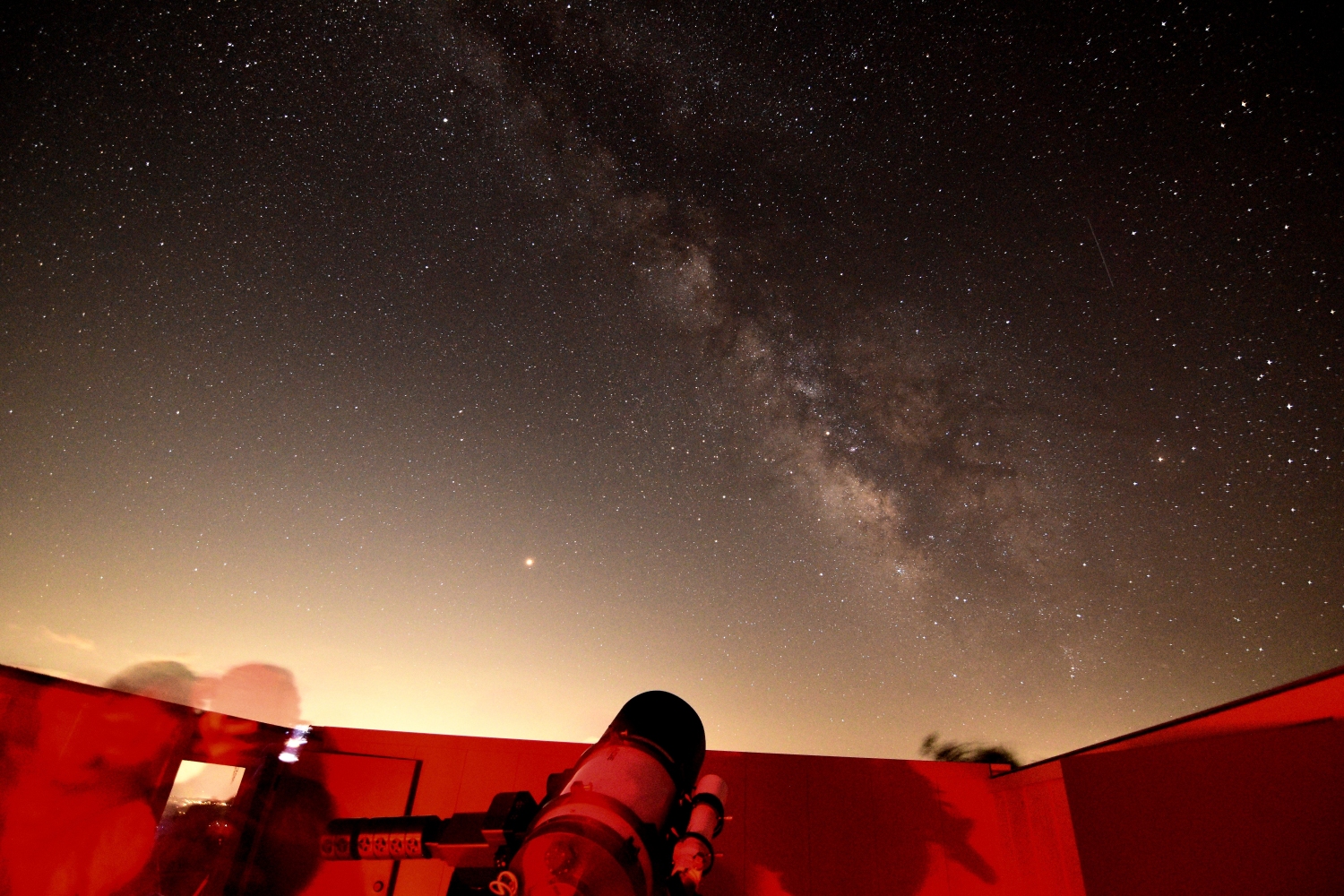There is no club speaker presentation in January.
The next speaker presentation will occur on February 5th.
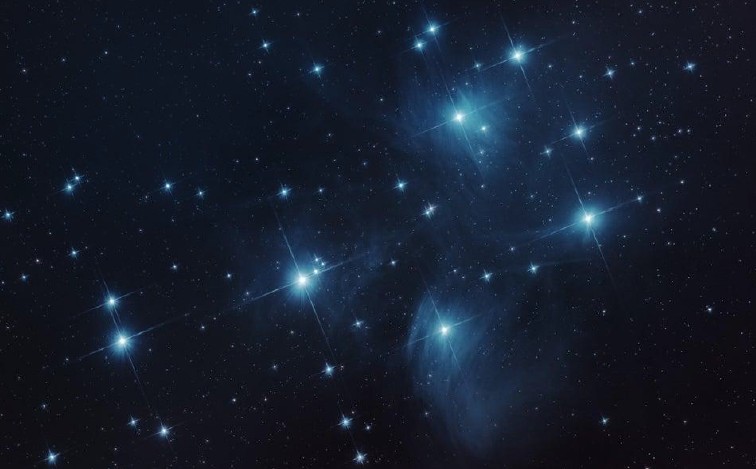 January 2026
January 2026
– The Pleiades Star Cluster Shines Brightly All Month
![]()
Two Public Star Gazes in January
Continue to check this home page as weather could change the venue or postpone and possibly cancel a star gaze. Check again after 4:00 p.m. on the afternoon of the observing session for the latest info and update.
9 Jan. 2026 — Friday night — This public star gaze will be held at Grassland Mountain Observatory in Madison County, with a weather backup night of Saturday, 10 January. This event is free and open to everyone — registration is not necessary to attend. A temporary gate code, required for entry, will be provided here on the day of the star gaze by 4:00 p.m. Directions to Grassland Mountain Observatory can be found here. These star gazes normally conclude about 3 to 4 hours after sunset, and visitors are not permitted to stay past the conclusion time. Sunset occurs at 5:34 p.m.
16 Jan. 2026 — Friday night — The location for this star gaze will be Lookout Observatory on the UNC Asheville campus, with a weather backup date of Saturday, 17 January. While the event is free and open to everyone, pre-registration is required to attend. To learn more about how to register, please visit the UNCA Lookout Observatory website here. Sunset occurs at 5:41 p.m., with shuttle service beginning about 6:30 p.m.
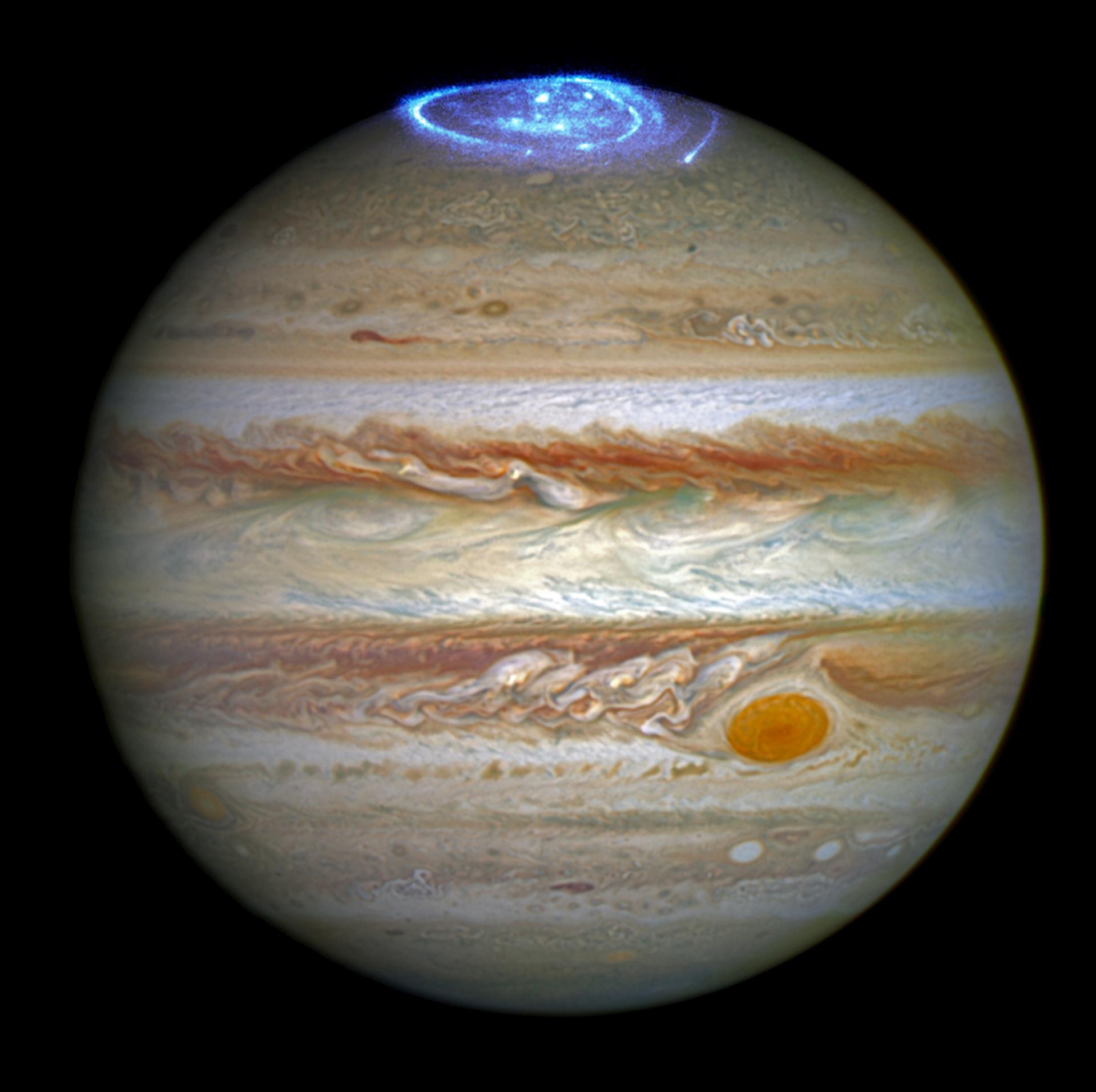 9/10 Jan. 2026
9/10 Jan. 2026
– Jupiter Closest to Earth this Month
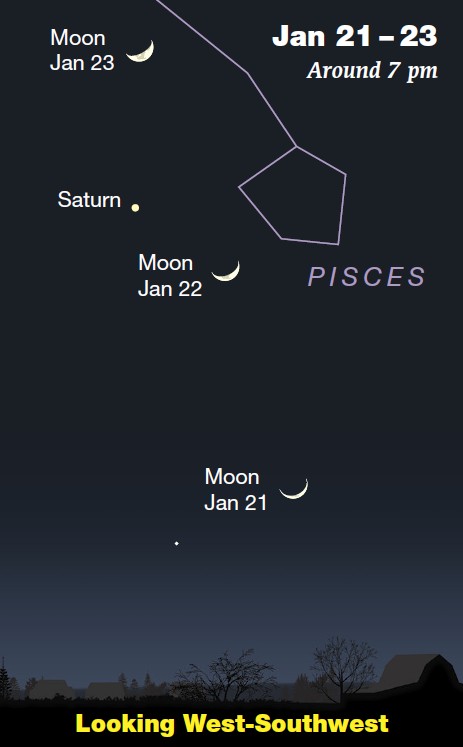 21-23 Jan. 2026
21-23 Jan. 2026
– A Crescent Moon Sails by Saturn
Illustration courtesy of
SKY & TELESCOPE
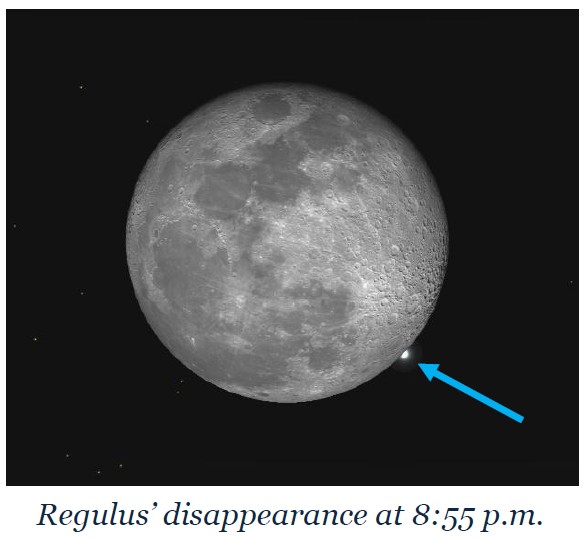 2 Feb. 2026
2 Feb. 2026
– The Moon Hides the Bright Star Regulus
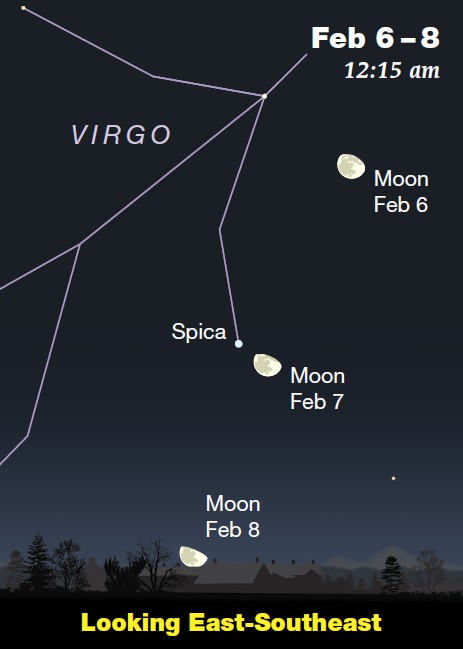 6-8 Feb. 2026
6-8 Feb. 2026
– The Moon Glides by the Bright Star Spica
Illustration courtesy of
SKY & TELESCOPE


